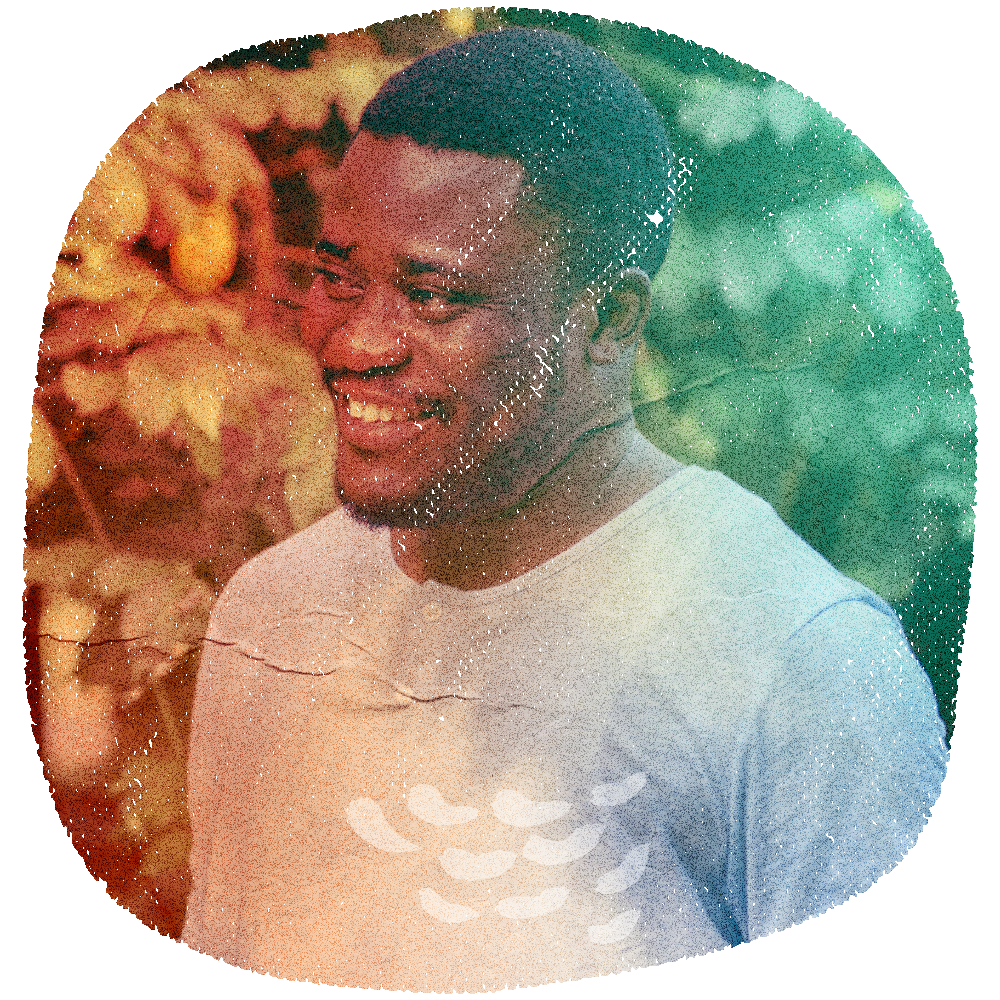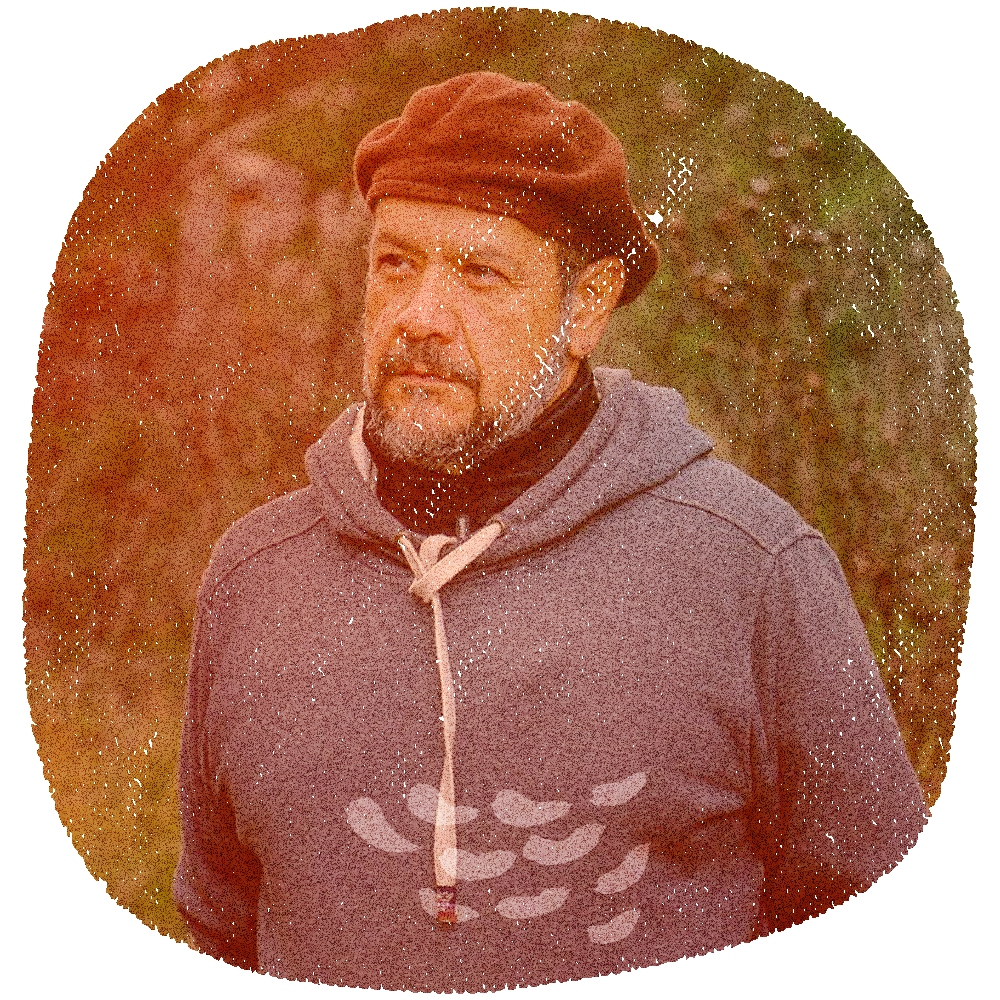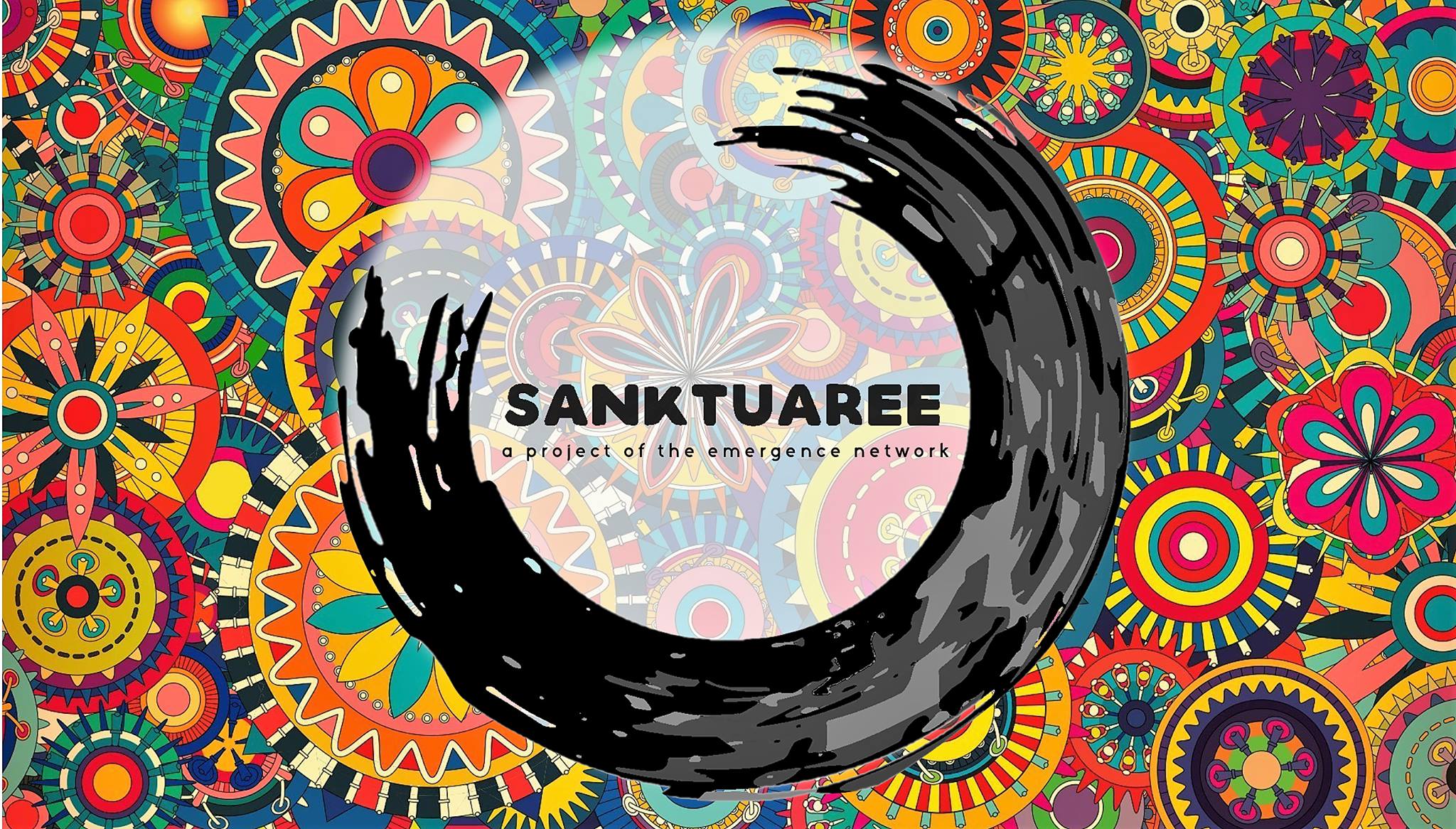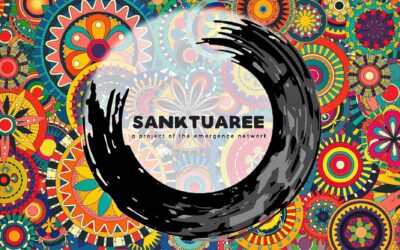
Sanktuaree: Festival of the Invisibles!
Báyò Akómoláfé
Table of Contents
Introduction: Is the world becoming more peaceful?
Sanktuaree: A shared inquiry into the crisis of our becoming
Can we reclaim the practice of seeking sanctuary?
Introduction:
Is the world becoming more peaceful?
If 2016 is remembered for anything, it most probably will be how close it brought us all to the precipice of established perspectives – and then gently shoved us to the startling valleys of troubling uncertainty below. We thought we knew how the world worked. Polls, esteemed panels of veteran pundits, history, and science assured us that we were on the right path. Barring a few hiccups here and there, the world was still on the train heading for greater justice and peace. “The system works. I keep calm and vote.” was the message of the times.
Then Britain chose to exit the EU after its referendum – shocking all the analysts who scoffed at the idea that the British people would do such a radical thing. Strongman Trump rode the waves of bigotry and anger, defeated his Republican challengers to win the nomination, and – while comedians and establishmentarians still made gravy with Trump’s comical candidacy and shocking lack of intelligence – defeated the anointed corporate candidate, Hillary Clinton.
But there’s more. 2016 gave us the Zika virus, escalating tensions between Russia and the US over the Syrian crisis, more dead black bodies on the streets of America, the successful launch of North Korea’s H-Bomb, the worst global food crisis in Southern Africa for 25 years, the repression of the Sioux people and protesters fighting against the North Dakota Access pipeline, and more fatalities due to terrorist/insurgent activities in Nigeria.
So, stating that “we may be living in the most peaceful era in our species’ existence” does come off as a tone-deaf assertion to make. And yet this is what noted Harvard psychologist and Pulitzer Prize winning author Steven Pinker believes to be true. He himself acknowledges that “in a century that began with 9/11, Iraq, and Darfur, the claim that we are living in an unusually peaceful time may strike you as somewhere between hallucinatory and obscene.” It’s certainly a strange notion to peddle – especially when you take into consideration the blitzkrieg of doomsday headlines that dot our digital landscapes, dragging us into real-time confrontations in Aleppo, animating our pixelated surfaces with intensely graphic content from the Gaza Strip, or bloodying the face of our newspapers with bold red fonts beneath the angry visage of Donald Trump. And yet, it is this kind of selective focus that Pinker warns against: one should not be looking at headlines to gain a wholesome view of what is happening in the world. Headlines are designed to tell you bad news, not good news.
Pinker’s statistical analyses invite us to consider that violence is indeed dropping. Compared to other periods in history, not as many war fatalities are recorded. War is presumably not as destructive as it once was. In his Better Angels of Our Nature, Pinker goes a little further, noting that over the past 70-plus years the number of battle deaths per 100,000 people has fallen dramatically – with no spikes, just a couple of “blips”.[1] Pinker also asserts that one of the reasons we think things are getting worse is because of a moral desire to be of some relevance, to fight a cause of some sort – which inspires us to paint a horrid picture of things in order to justify our particular concerns. We need things to be bad in order to be good. Pinker’s underlying thesis is however that Enlightenment thinking, the spread of reason and education, is producing a civilized population who know better than to rip people’s hearts out of their chests to appease weather deities. In short, we are moving forward – away from the backwardness of medieval, pre-modern times and towards even greater peace.
The more obvious problem with Pinker’s research is how it depends on a definition of violence limited to wartime combatant fatalities.
The patterns of the past century – one recurring in history – is that the deaths of noncombatants due to war has risen, steadily and very dramatically. In World War I, perhaps only 10 percent of the 10 million-plus who died were civilians. The number of noncombatant deaths jumped to as much as 50 percent of the 50 million-plus lives lost in World War II, and the sad toll has kept rising ever since. Perhaps the worst, but hardly the only, terrible example of this trend can be seen in the Congo war – flaring up again right now – in which over 90 percent of the several million dead were noncombatants. As to Pinker’s battle-death rations, they are somewhat skewed by the fact that the overall populations have exploded since 1940; so even a very deadly war can be masked by a “per 100,000 of population” stat.[2]
It is a mistake to focus too heavily on declining fatalities on the battlefield. If these deaths have been falling, one reason is the balance of terror: nuclear weapons have so far prevented industrial-style warfare between great powers. Pinker dismisses the role of nuclear weapons on the grounds that the use of other weapons of mass destruction such as poison gas has not prevented war in the past; but nuclear bombs are incomparably more destructive. No serious military historian doubts that fear of their use has been a major factor in preventing conflict between great powers. Moreover deaths of non-combatants have been steadily rising.[3] As Arquilla above notes, around a million of the 10 million deaths due to the first world war were of non-combatants, whereas around half of the more than 50 million casualties of the second world war and over 90% of the millions who have perished in the violence that has wracked the Congo for decades belong to that category.
There are however even ‘deeper’ critiques and questions around Pinker’s work that are outlined below:
1) It seems too limiting to define peace by declining numbers of war events or killed people. Moreover if headlines and images are poor ways of seeing the world, isn’t this statistical research also limiting and contained in a way? Does lower deaths necessarily mean lesser violence or even greater peace?
2) What about the war encoded into the ordinary? The war implied in a diamond ring, subdued by distance. It is important we come to terms with the normalization of violence in structures by which our everyday experiences are now conditioned. In other words, maybe empire or globalization is more effective at containing ‘the scream’ or shielding a crisis of forms. Tacitus puts it best: “To plunder, to slaughter, to steal, these things they misname empire; and where they make a wilderness, they call it peace.”
3) Which measures fix peace? If we use statistics that focus on combatants as a measure, then we are in peaceful times. But knowledge production practices involved with statistical research contain exclusionary dynamics that do not tell the whole story.
Suggesting that many deaths in pre-modern cultures equal greater barbarism tells us nothing about the nature of those deaths. Could we not also say that it is not the case that war is becoming obsolete (evincing a movement from barbarism to Enlightened ends), but that we are getting better at hiding its effects?
4) What about cyberwarfare? Can we not state that the nature of violence and war is also unstable – so that using the same measures of fatalities seems uncritical and naive? What about the transmutations of GMO foods, a direct consequence of WWII and the industrialization of food it spurned? Is this less destructive to bodies, communities, and cosmovisions?
5) As Gray states: “There is something repellently absurd in the notion that war is a vice of “backward” peoples. Destroying some of the most refined civilisations that have ever existed, the wars that ravaged south-east Asia in the second world war and the decades that followed were the work of colonial powers. One of the causes of the genocide in Rwanda was the segregation of the population by German and Belgian imperialism. Unending war in the Congo has been fuelled by western demand for the country’s natural resources. If violence has dwindled in advanced societies, one reason may be that they have exported it.”
6) Perhaps, most important is the underlying notion that Enlightenment ideals are free of shadows, or that the more we advance the more obsolete and less destructive war becomes. In order to disabuse oneself of the questionable assertion that violence is inversely proportionate to advancement, one need only examine the details about how colonial powers extended their powers by stripping others of their humanity and dignity. Gray states: “Judged by accepted standards, the United States is the most advanced society in the world. According to many estimates the US also has the highest rate of incarceration, some way ahead of China and Russia, for example. Around a quarter of all the world’s prisoners are held in American jails, many for exceptionally long periods… Cruel and unusual punishments involving flogging and mutilation may have been abolished in many countries, but, along with unprecedented levels of mass incarceration, the practice of torture seems to be integral to the functioning of the world’s most advanced state.”
We don’t know what peace is
Pinker’s peace is a very anorexic notion of peace – a peace that depends on silent edges, sweeping impasses under the carpet, and fixing one’s gaze on quantity… with little regard for lived experiences. This goes to show that defining anything with such exactitude – as if the thing is independent and given in a pre-relational way – is fraught with problems.
What does peace look like? The absence of war? Technological advancement? Freedom of expression? Living to one’s fullest potential as a human being? A utopic world with no form of violence whatsoever? There’s so much at stake when we peg down ‘peace’ – so charged a concept – to a specific address.
I think peace is ungraspable. The nature of it is indeterminate, not fixed. Still in the making. This is at once frightening and hopeful: peace (or the meaning of peace) is not ‘there’, waiting for us to simply approach it in linear fashion. In these times of shocking upheavals and upsets, when politics-as-usual faces a crisis of form, when bodies are marked for their colour or gender and rendered inappropriate, when nature disrupts and undoes our brightest thinking on climate justice, it is especially true that we have to revisit changing conditions of peace. We now live in the ruins of the project of human ascension, and perhaps we must now meet outmoded aspirations about unlimited growth and contest these regimes of truth in radical collective inquiry.
In short, the peace we need is still being made. Touching the contours of our humanity, disturbing usual parameters of behaving, learning our limitations and staying with the trouble of our fragility will prove more “conducive to the kind of thinking that would provide the means to building more livable futures” (Donna Haraway, Tentacular Thinking).
Sanktuaree:
A shared inquiry into the crisis of our becoming
An ancient practice of claiming sanctuary, predating the Christian traditions it is more familiarly associated with, meant that some sites were deemed to be so holy that if a criminal got any part of his body in it, he would gain absolute protection or at least (as came to be the case in revised sanctuary protocols) some clemency. Attaining sanctuary staved off the enforcers of law in Rome and, later, protected many people who fell on the wrong side of the powers-that-were in the lands where the Christian church was recognized as supreme.
It is said that “the Romans thought at times that these institutions were being abused by criminals, but never managed to break the practice, allowing it to seep into the Old Testament, which suggested that church altars ought to be a safe space for those who’d committed accidental murders and called for the establishment of sanctuary cities.[4] Today, claiming sanctuary is no longer acceptable practice – though an isolated incident in Vancouver in 2009, involving a Russian ex-KGB agent resisting deportation to his motherland by claiming sanctuary at Vancouver’s First Lutheran Church – which went unchallenged by the Canadian Border Services – is an instance of what was once widespread and familiar. The clear distinction between church and state, the sacred and the secular, means that ‘claiming sanctuary’ remains an ordinance relegated to the reliquaries of pre-modern times.
But the figure of calling out on the sacred, of seeking other places of power, of crying out “hold everything!” (with Dick Tracy-ian audacity), of calling for a slowing down and a cooler reappraisal, and of claiming a home in the swirl of chaos is an attractive detour away from the highways of modern socio-political trajectories.
Can we reclaim the practice of seeking sanctuary?
I think we can – but this would have to depend on a revised notion of the sacred… not that which depends on religious power or ecclesiastical might or an exclusive understanding of righteousness. We live in an age of spillages, and the sacred can no longer be contained in halos, in church buildings, in ancient texts, or in extraordinary pilgrimages to shrines set into mountain sides. Such a notion of the sacred is unthinkable in a time when we now understand entanglement – how each moment is alive and thick with manifold histories and perverse becomings.
As such, we have modified the word ‘sanctuary’ to reflect this inflection of the sacred, this turn to different kinds of generativity. ‘Sanctuary’ is respelled irreverently as ‘sanktuaree’, and is given as a name to a kind of event that serves as the base for encounters with other possibilities for living and shared inquiry.
Sanktuaree is an event curated by The Emergence Network in partnership with a local sponsoring host, where the host co-determines and shapes questions that energize a participating public for a number of days. Sanktuaree is a kind of festival at the edges of human becoming – a frontier event designed to inspire exploration of the conditions that maintain our social orders and invite new practices that help us make kin with the world, with place, with each other.
The aspiration is to invite a different kind of political engagement and to hold space for radical hospitality. Sanktuaree can be envisioned as cascading circles of spontaneous activity – performance art pieces of gift, shared food, gift circles, radical experiments, street conversations, experiments, games, dancing, the reclamation of public spaces, camping, multiple curators, talks, and new rituals of seeing.
The invitation is sent out – participants perform a question. The organization is ‘traditionally’ irreverent, hacking usual tropes (camping on the streets). Living together as an experiment.
Unlike conventional seminars, the purpose is not simply to pass information across – but to invite radical participation, to evoke a strange festivity surrounded by the neat confines of city walls and buildings, and provide a space where new questions can be asked about what it means to be alive. Sanktuaree is an art installation of non/human bodies, disenchanted feelings, unvoiced yearnings and prayers for more livable worlds.
Sanktuaree is a process of co-exploration – ‘co-kwilting’, staying with a troubling question… moving outside the usual seminar format, not coming to conclusions, adopting practices and generating/cultivating in situ new modes of relating with the world. Sanktuaree is not about escape, it’s about removing one’s sandals and recognizing that where we stand is ‘holy ground’. Claiming sanctuary is about resacralization.
Partnership with World Goodwill: Sanktuaree 2017 – Peace
World Goodwill is committed to exploring the nuances of culture that can help peace and goodwill thrive for all. Doing this means exploring the discourses that frame our experience of the world today. This makes World Goodwill a great partner for the first Sanktuaree event.
I propose we explore peace for the first go. The question of peace or how we can practice peace meaningfully and creatively – as well as the conditions that make that possible – is an attractive discursive site to occupy.
The Emergence Network
ten is a curated constellation of projects fascinated with the manifold, material politics of sight – with the nuanced ways the obvious obviates from view; with how ideological frames and well-entrenched patterns of knowledge-making actually perform the world (instead of merely observing it from an exterior point of view); with the unnoticed ways that names “blind the eye”; and, with the ways the invisible, the repressed, the inappropriate haunt us – calling for different responses and queering the fixity of answers and solutions.
In many senses, we don’t even know how to talk or think about the many challenges we face. We assume we do. We assume that the problem of, say, climate change has a solution out there, and that to reach it we must string together a sequence of thoughts to meet it. Quid pro quo. Cause and effect. However, our articulations of causality or how things come to be are woefully inadequate and often vanishingly reductionistic – simplifying a dense network of contagious co-becomings into straw-man models and independent ‘objects’ that fit institutionalized action plans. What therefore often passes as a response to a crisis is an eloquent perpetuation of sameness.
We think that responding is always bigger than thought; always more outlandish than solutions; always a queering of arrivals; always a transfiguration of bodies; when a wave crashes ashore, it doesn’t… the ocean does, along with a density of relationships and histories and half-baked becomings and aborted biological alliances and sun-smitten organisms and listless secretions. Arrival is never singular or uncomplicated – or incontrovertible. Arrival is already queered.
At the heart of our organization is the question: what if we don’t even comprehend what is happening? What if in spite of pretensions to clarity we are out of our depth, drowning in a body too immense? What if there is no wrong approach to climate change or economic inequality or the disenchantment that comes with being a modern citizen? What if we are situated in a more-than-human world, and there is no intact response – no action that is not already a murmuration of multiple voices and bodies and timelines and ideologies?
Our project is invested with the yearning to help make visible the assumptions and textured layers of dreams and orientations that come to play in our appraisals of a crisis-ridden world. We seek to commit energy in the murky terrains of blind-spots; to curate activities and offerings that emphasize the polyvocality and vibrant agencies of the more-than-human world – often occluded in the optics of a human-centred one; to initiate (with expository writing, conversations, place-based methodologies, and dialogue on the contours of contemporary activism) expeditions that challenge the linearity of our plots and ‘narratives of arrival’; and, to resituate ongoing questions about how we can live peaceably and abundantly in/with the world within the context of a more-than-human, messy, agentic world that is never the same the next time you look.
We have no utopian portrait of conquest (not that we do not always act from, or entertain, several!). No manifesto. We simply feel the terrain is too active, too vibrant for our maps to save the day. We are caught up with the idea that action is never independent, always involved, always more-than-human, and always conditioned. We will not ‘solve’ the problems of rank consumerism, recalibrated neocolonialism and oppression, or neoliberalism. The promise of the emergence network is not so much to provide solutions, or to galvanize communities around a central theme of emancipatory politics, but to evoke wonder; to resituate action and our yearnings for resolution within a preposterously messy context – the very condition of our being; and, in so doing, “inspire a greater sense of the extent to which all bodies are kin in the sense being inextricably enmeshed in a dense network of relationships” [Jane Bennett].
[1]The Big Kill, by John Arquilla, http://foreignpolicy.com/2012/12/03/the-big-kill/
[2] ibid.
[3] Steven Pinker is wrong about violence and war, John Gray: https://www.theguardian.com/books/2015/mar/13/john-gray-steven-pinker-wrong-violence-war-declining
[4] http://modernnotion.com/church-sanctuary/
Sanktuaree Project Description
Sanktuaree [ten artifacts] The generative ritual of Sanktuaree invites us to pay attention to the ways we collectively perform the normal, and to make room for other places of power as we welcome the outlier, embrace the irregular and weird, and stitch a politics of...








